
At the risk of being like the opera diva who returns every year for yet another “farewell tour,” let me add one more episode to The Monochrome Chronicles. For this I return to one of my earliest crazes: street photography and specifically street photography in NYC.
The work of well-known street photographers featured prominently in the evening courses that I took at ICP, touted as images that demonstrate the ABCs of film photography. Also the homework assignments encouraged shooting on the city streets.
Eventually I was hooked. The streets of my neighborhood took on a new dimension. The West Village, where I lived, and its surrounding neighborhoods, were fertile territory for me and my camera.
Oddly, none of the previous episodes of The Monochrome Chronicles focuses specifically on my street work. Some of the images have appeared in a few of the episodes, scattered throughout the series. Now is the time to rectify that oversight.
Segue: The Subway
Street photography from the NYC subway abounds. The question, then, is why should I add my 2-cents worth to an overcrowded field. I can offer two reasons. First, this is my take on the subject. I went from bewildered novice to hardened veteran in the course of riding the subway for 20 years. Second, this was my proving ground. At the time when ICP introduced me to street photography, I was riding the subway every day. I could combine the two: practicing street photography while on my daily commute.

In their Sunday-going-to-church best,
Gazing in tandem at something
Outside the frame.
NYC subway, 1998
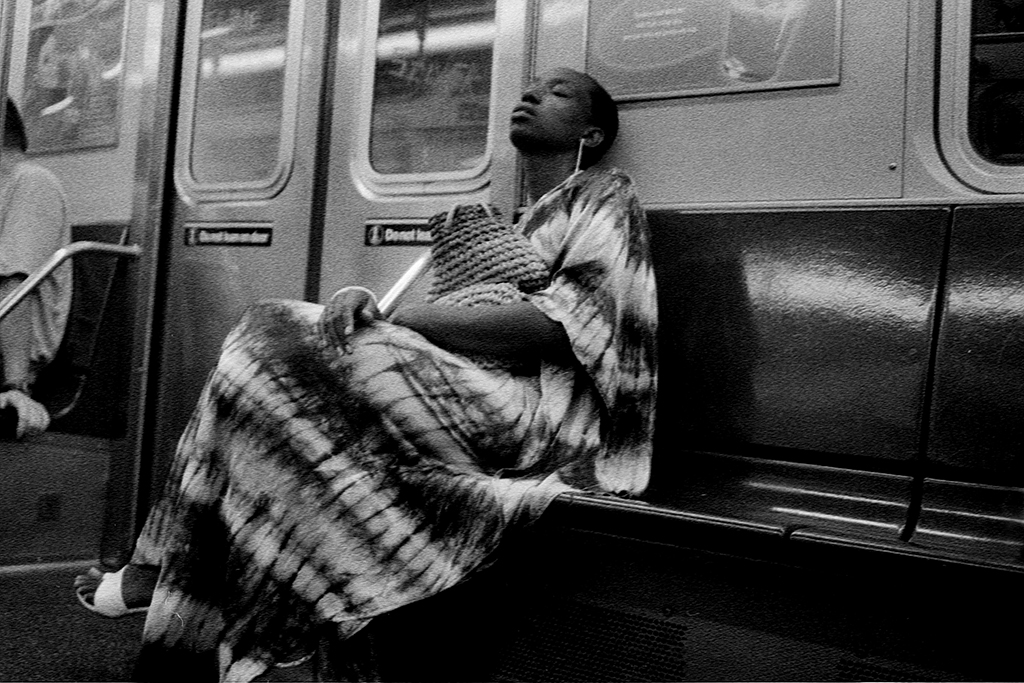
Her vibrant dress a counterpoint
To the drab subway car.
NYC subway, 2002

Or maybe romance.
NYC subway, 2002

Patrol in pairs, never alone.
NYC subway, 2003

With 248 miles of track,
And 6787 subway cars.
Never alone,
Always vigilant.
NYC subway, 2000
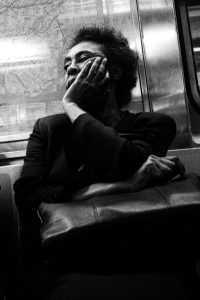
A hand gesture,
A language without words
NYC subway, 2001

Cavernous, empty.
Audible silence.
York Street Station, 2000

West 23rd Street Station, 2002
Segue: People
The focus of street photography is people – on the sidewalk, sometimes literally on the street, in public places, on mass transit, anywhere in public. Finding people on the street in NYC is easy, it’s virtually unavoidable. The challenge is to find the story behind the person.
My goal is that each image should tell a story. My role as photographer is to show you, the viewer, an image that holds the story. You, the viewer, must read the story.
Herein is my collection of stories about New Yorkers being themselves. Cast aside your stereotypes, these are just people leading their everyday lives.

Pushers on the sidewalk,
Muttering “Smoke, smoke.”
A moment of calm
At midday in Midtown.
Always vigilant.
Bryant Park, 2014

Alone on the sidewalk.
A shopping bag,
A walking stick.
Mobility. Independence.
Sixth Ave., West Village 2014

Two…
One…
Saturday morning
At the market.
Chinatown, 1995
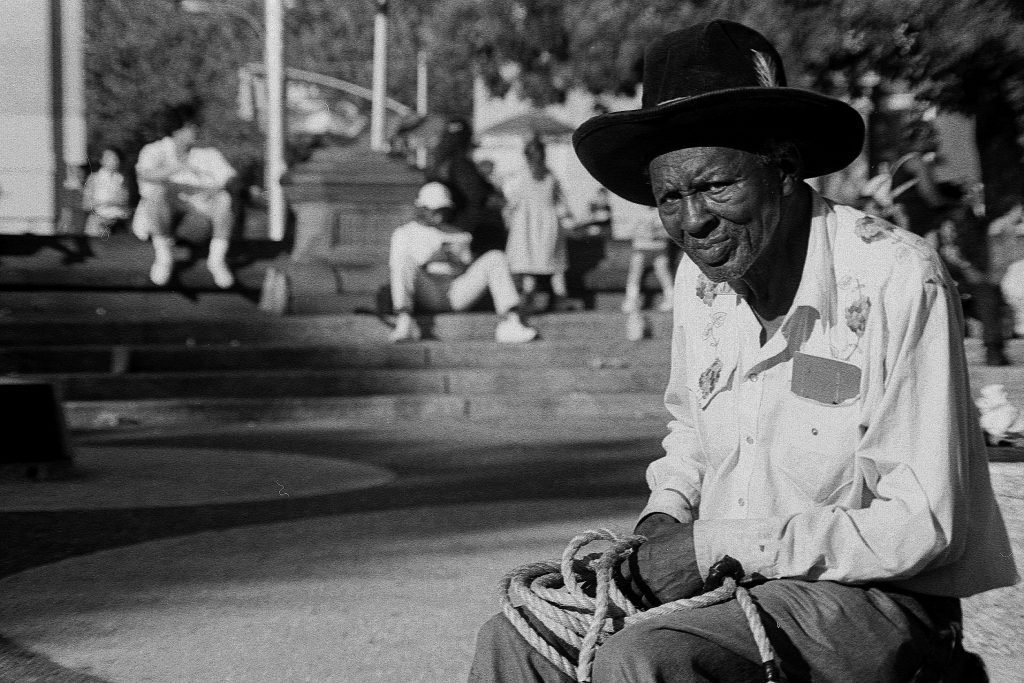
An empty fountain,
A faux cowboy,
The substance of dreams.
Washington Sqare Park, 1995

People sitting
Like chickens
On a roost.
Sunday afternoon in SoHo.
Prince Street, 1995

Past, present, future.
The present is now.
The past ends now.
The future begins now.
Sometimes the past never ends.
NY Public Library, 1995

Traffic on the streets,
Sidewalks teeming
With pedestrians.
Canal Street, 2003

A man finds solitude,
In a public space,
At night.
Lincoln Center, 2002
Segue: Alternative Identities
In NYC, sometimes a fine line separates reality and fiction. The theater district, Broadway, Lincoln Center, NYC was a mecca for stage performers. Lesser venues abounded too: off-Broadway, off-off-Broadway, the clubs, NYC was alive with opportunities for theatrical expression. Then there were options for off-stage characters and alternative identities.
Such alternative identities formed a substratum for my street photography. The challenge was to distinguish between caricature and character, between alternative identity and the individual.
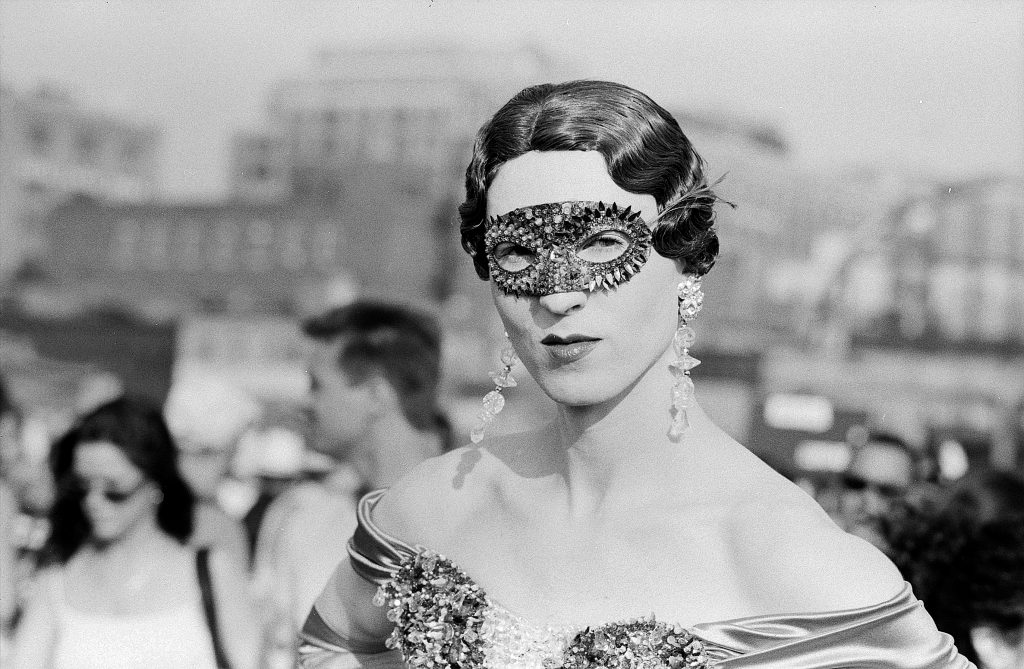
Like the night.
Radiating elegance.
A haunting beauty,
A mystery.
Wigstock, 1998
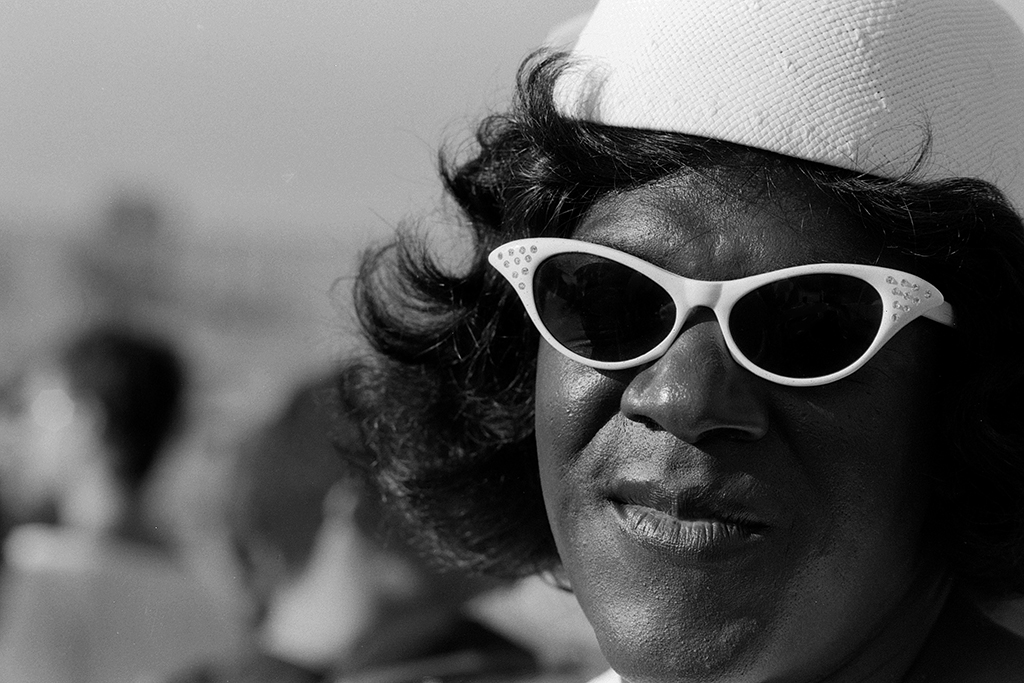
An oxymoron? A pun?
Over the top? Spot on?
Wigstock, 2001

Hair teased, make-up on,
Pearls and dress just so.
Tomorrow
Only a memory,
And the negative.
Wigstock, 1997

An admirer from real life.
Both in the same frame,
For one moment.
Wigstock, 1995
For me, this whole street photography series seems like a dream. Though it was real at the time, now it exists only as a memory. Through these photographs the reality returns, but only in my imagination.
I need to place this street photography series in context. My series illuminates a small part of NYC, my part. The time was some 25 years ago, a whole generation ago. Film was still dominant in photography. Cameras were hand-held SLRs, big and bulky by the standards of today.
More important, though, was the mood of the city and its people at the time. This was before 9/11 and the WTC atrocity. NYC was in a transition of sorts. The economy was robust, crime was on the decrease, Broadway, Lincoln Center and jazz clubs were vibrant with music.
And yet there was an undercurrent, too. Yes, the city never slept, but New Yorkers carried their invisible cloaks of vigilance, of anxiety, to get them through the day.
This episode of The Monochrome Chronicles is unabashedly about me, about my time in NYC, I’m afraid to say. Many people and places occupy the small space of my street photography but one thing I can claim: all these images came from my camera.